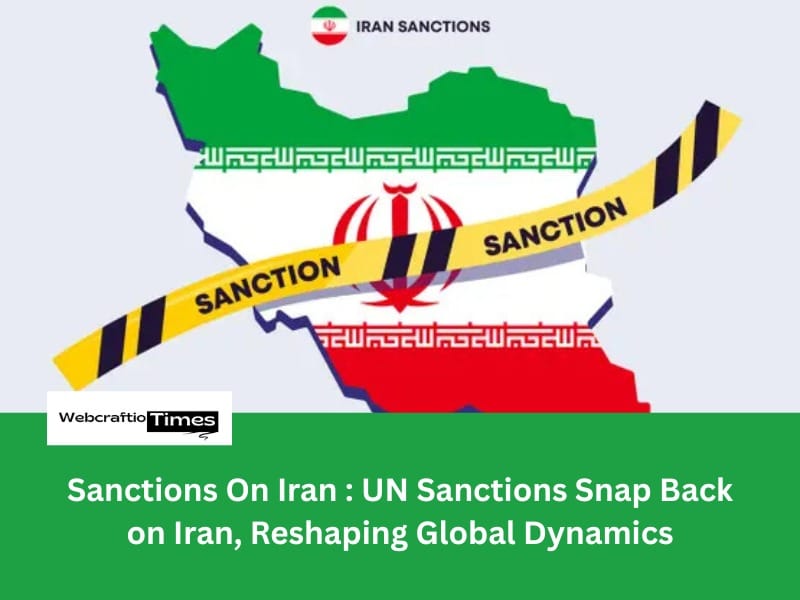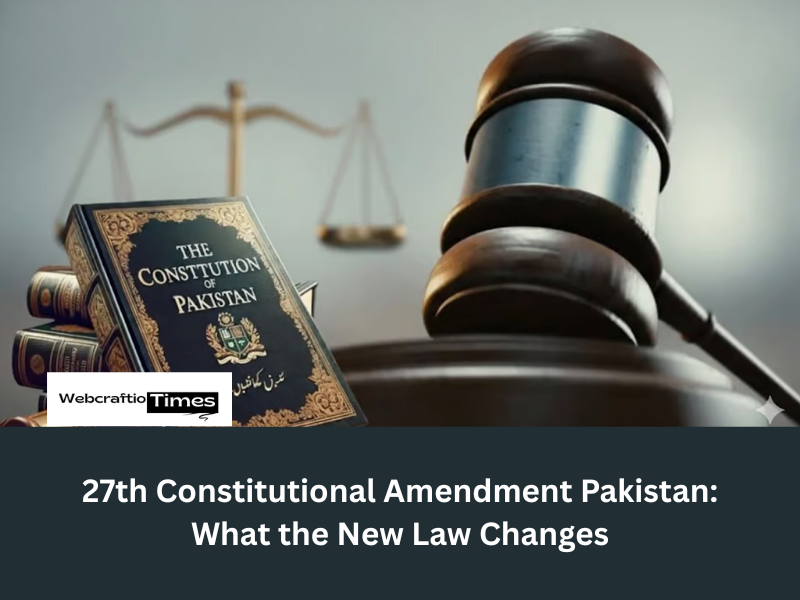The situation for Iran is changed enough. At midnight on September 28, 2025, the deadline for the 2015 nuclear deal ran out, and the UN’s old sanctions automatically came back on Iran. This means the economic relief that Iran once enjoyed from this deal has disappeared. Now, Iran is facing tougher times again, cut off from much of the world and under heavier financial pressure.
This isn’t just a small deal, this is a big event with huge effects.For a long time the world was worried about Iran’s new clear programme especially USA and Israel. To address this, the JCPOA deal was created, according to this deal Iran agreed to limit its nuclear activities in return for economic benefits. But recently, doubts raised about whether Iran was following the deal, especially after talks with other countries broke down. Because of this, France, Germany, and the UK decided to activate the deal’s emergency rule.
What Exactly Just Happened? Understanding the UN Sanctions On Iran
On August 28, 2025, France, Germany, and the UK told the UN Security Council that Iran was not living up to its promises under the nuclear deal. This started a 30-day countdown. If the UN didn’t pass a new resolution to keep sanctions lifted, the old sanctions would automatically return. The deadline passed, no new resolution was made, and so the sanctions came back into force.

These aren’t small changes, these changes are major ones. The new UN sanctions are meant to put strong pressure on Iran in many important areas of its economy .
Main Sanctions That Are Back in Place:
- Global Arms Ban: Iran can’t buy or sell regular weapons with anyone. This blocks Iran from upgrading its military and from sending weapons to its allies in the region.
- Nuclear Limits: Restrictions are back on Iran’s work with uranium and other nuclear materials, to stop Iran from moving closer to building nuclear weapons which Iran is trying to build since many years..
- Missile Program: These rules stop Iran from making ballistic missiles, which many countries see as a threat and they don’t want Iran to achieve this goal.
- Freezing Assets & Travel Bans: Important people and groups tied to Iran’s nuclear and missile programs can’t use money they have abroad, and many are banned from traveling internationally.
- Banking Restrictions: While not as tough as US sanctions, the UN rules make it harder for Iran to move money or do international banking.
Read More : France and More: Why Are Recognized Western States Recognizing Palestine Also?
Why Now? How the Sanctions Came Back
The choice by France, Germany, and the UK didn’t come out of nowhere. It shows the international community’s growing worries about Iran’s behavior.
- Breaking Nuclear Promises: The UN’s nuclear watchdog, the IAEA, has repeatedly reported that Iran is moving away from its commitments under the deal. This includes enriching more uranium and expanding its nuclear facilities.
- Regional Tensions: Iran is often seen as fueling conflicts in the Middle East by supporting proxy groups and testing ballistic missiles. This has raised fears about its long-term goals.
- Failed Diplomacy: Attempts to restart the JCPOA or create a new deal have mostly gone nowhere. With talks stalled, the E3 felt sanctions were the only tool left to apply pressure.
- US Influence: The US left the JCPOA in 2018 and brought back its own sanctions. Since then, Washington has pushed its allies to take a tougher stance, which likely added weight to the E3’s decision.
The Economic Squeeze: What This Means for Iran
Iran’s economy has already been struggling for years, falling down by U.S. sanctions and its own internal problems. Now that UN sanctions are back, the pressure will only get worse.
- Falling Currency: Iran’s money, the Rial, is already at its weakest point ever. With new sanctions, it will lose even more value, making imports more costly and reducing the buying power of everyday people.
- Rising Prices (Inflation): As goods become harder to import and the economy slows down, prices will climb even higher. Families will feel this directly in their daily expenses and living standards.
- No New Investments: Foreign companies were already afraid to invest in Iran. Now, with UN sanctions adding new risks, it will be even harder for Iran to attract outside money and business and like others this will leave negative impact on Iran’s economy.
- Oil Struggles: Oil is Iran’s main source of income, but sanctions especially banking limits will make it even tougher for Iran to sell its crude oil abroad and grow his economy.
- Shortage of Goods: While the arms ban mainly targets the military, broader financial restrictions can also make it harder for Iran to import other important goods, sometimes even basic essentials.

The average Iranian citizen will feel the brunt of these measures. Life will likely become harder, with fewer economic opportunities and increased financial stress.
Global Reactions
The snapback has not been met with universal agreement, highlighting divisions within the international community.
- US and Allies: The United States, which never truly accepted the JCPOA’s legitimacy after its withdrawal, has applauded the move, seeing it as validation of its “maximum pressure” campaign. Other like-minded allies, particularly in the Middle East, have also welcomed the stricter stance.
- Russia and China: These nations, both permanent members of the UN Security Council, have opposed the snapback. They view it as undermining the JCPOA and international law. Their stance could lead to difficulties in enforcing the sanctions universally, as they might continue some trade or cooperation with Iran.
- Iran’s Response: Tehran has vehemently condemned the re-imposition of sanctions, calling it “illegal” and a violation of the nuclear deal. Iran has threatened further escalations of its nuclear program and continued defiance. This could lead to a dangerous cycle of action and reaction.
The coming months will be critical.
- Enforcement Challenges: The effectiveness of these UN sanctions will depend heavily on international cooperation. Will all nations fully comply, or will some, like Russia and China, find ways to circumvent them?
- Iran’s Nuclear Trajectory: How far will Iran go in enriching uranium or developing advanced centrifuges in response? This could bring it closer to a “breakout” capability, raising serious proliferation concerns.
- Regional Stability: Increased tensions between Iran and its neighbors, particularly Israel and Saudi Arabia, are a significant risk. Any miscalculation could have devastating consequences.
- Diplomatic Opportunities (or Lack Thereof): With sanctions back in force, will there be any room for future negotiations, or has this move effectively closed the door on a diplomatic resolution for the foreseeable future?
Read More : Saudi Arabia-Pakistan Defence Pact: A Game-Changer for Regional Geopolitics
A Look at the Future: Uncertainty Prevails
The re-imposition of UN sanctions on Iran marks a significant turning point. It signals the effective demise of the JCPOA, at least in its original form, and heralds a period of heightened uncertainty and potential instability. The international community now faces the daunting task of navigating this complex situation. It must find ways to manage Iran’s nuclear program and regional actions while avoiding a dangerous escalation.
The path ahead for Iran and the world is fraught with challenges. The hope for a stable, integrated Iran seems more distant now than it has in years. The world watches anxiously to see how this new chapter unfolds, with the economic and political pressures on Iran reaching critical levels.
FAQs
Q1: What are “snapback” sanctions, and when did they start?
“Snapback” sanctions are United Nations penalties that were removed in 2015 under the Iran nuclear deal (JCPOA) but have now been brought back. They started on September 28, 2025, after the UK, France, and Germany triggered a 30-day countdown.
Q2: What major rules are back in place against Iran?
The sanctions include:
A global ban on buying or selling weapons with Iran.Bans on activities linked to uranium enrichment and missile development. Freezing the assets of certain people and groups, plus travel bans.
Q3: Why did the UK, France, and Germany trigger the snapback?
They believed Iran was breaking the nuclear deal. This included enriching uranium beyond limits and blocking some UN inspectors from checking nuclear sites.
Q4: How will these sanctions affect Iran’s economy?
They will:
- Push Iran further into financial isolation.
- Lower the value of the Iranian Rial.
- Scare away foreign investors.
- Make inflation worse, raising living costs for ordinary people.
Q5: Did all UN Security Council members agree with this move?
No. Russia and China opposed it, saying it undermines the JCPOA. While the snapback can’t be vetoed, their resistance may make global enforcement weaker.



